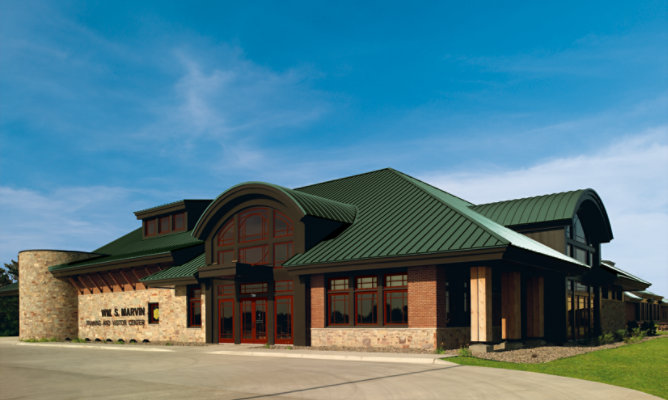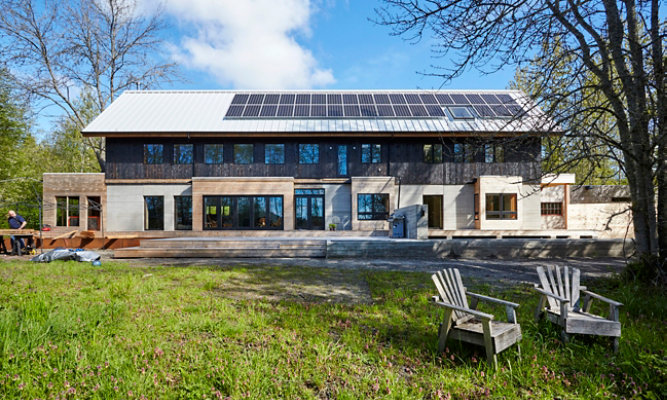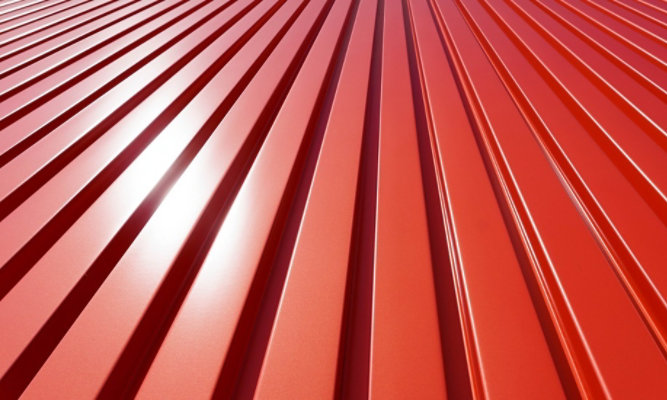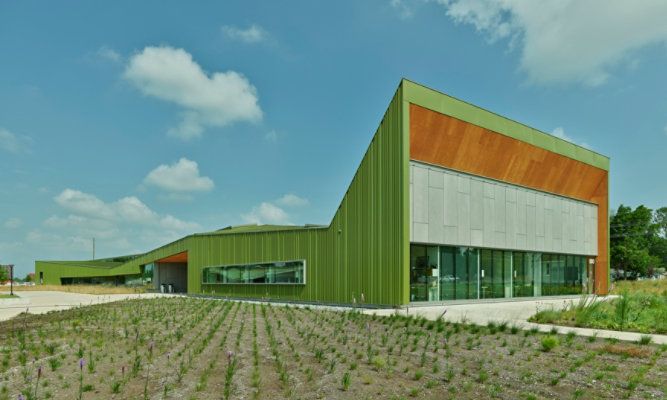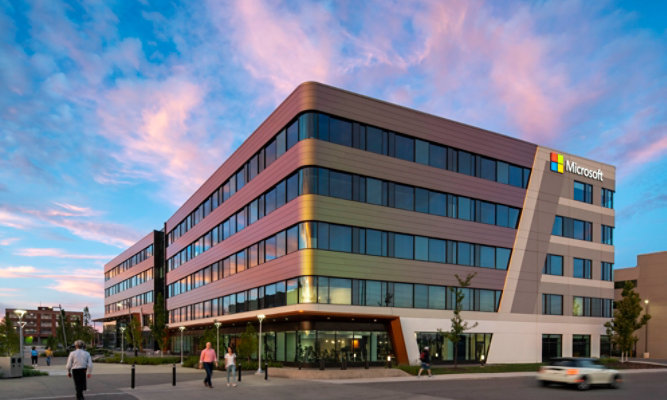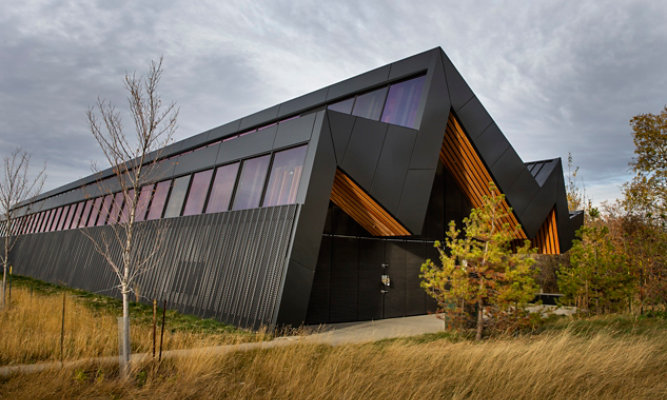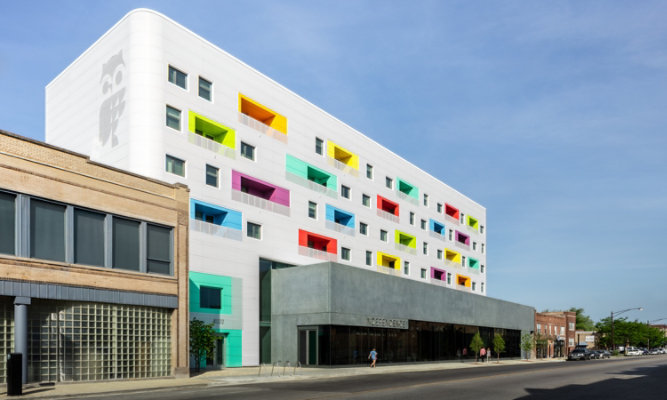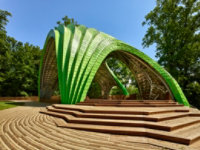In An Ideal World, Every Coating Is Green
September 2016
Within the business world at large, “sustainability” can often be used as a buzzword of sorts — a broad and sometimes indefinable term that loosely touches upon a corporation’s general efforts to protect the environment.
In the construction industry, sustainability is a transparent and top-line priority for manufacturers, architects and building owners alike, all of whom place major focus on the development, production, and incorporation of environmentally-friendly building materials into their workflow. For coating manufacturers, not only must a finished product contain a high-level standard for sustainability, it must also maintain the aesthetic quality that visually brings a project to life.
As one of the leading manufacturers of coatings, it is imperative for Valspar and our peers to set an example for the entire industry and produce more sustainable products and technologies that address the many problems facing our earth. First, let’s address a few of the larger environmental issues that have impacted the industry, then discuss what’s being done to combat them, which organisations are helping steer the cause and what the future holds for sustainability in coatings.
Reduced and Reused VOCs
Volatile Organic Compounds, or VOCs, have been a component of the coating industry for years because they contain properties that assist in the application of coatings to a surface. Recognised as an element that can contribute to the aroma of paint fumes, VOCs play a significant role in contributing to the generation of ground-level ozone and urban smog, which can directly lead to negative health effects for us and environmental issues for the earth.
Once this danger was truly understood, coating manufacturers shifted their attention to developing chemical formulations that diminished the need for harmful solvents, like VOCs. Valspar was able to make a direct impact on this mission by implementing a higher percentage of solids in its formulations.
Adding more solids into a coating formulation results in a smaller amount of the coating volatizing into the air, thus reducing the accumulating effect of urban smog and ground-level ozone. Furthermore, the coil coating process includes the incorporation of a thermal oxidiser. This helps return VOC gases released during the coating process back into the system to become fuel for the curing process, rather than leak out into the environment.
Protecting a More Impactful Substance
Coil coatings extend the life of a metal substrate by providing a waterproof, weatherproof corrosion resistant protective barrier. A metal roof can also be one-eighth the weight of other roofing products, placing a lighter load on the structure and foundation and extending the life of the entire building. Adding a coating to a metal surface can extend the usable life of that metal substrate well into the future. A recent life cycle assessment performed on metal roof and wall systems concluded that upstream metal production takes the most significant share of the environmental burdens1. Additionally, metal roofs last far longer than traditional materials. In general, building owners can count on a metal roof lasting up to 40 to 60 years, while the average lifespan of an asphalt roof usually rests between 12 to 20 years2.
Reflecting Infrared Energy
Much like a traveller wears extra, protective clothing while crossing the Sahara dessert, architectural coatings can help protect a newly constructed building from the harsh rays of the sun and keep it cool. And just like the growing threat of the sun’s dangerous impact on our skin, so grows the escalating issue of the energy costs and concerns over global warming from building owners.
Throughout the day, as the sun beats down on the surface of a building’s roof and exterior, infrared light is steadily absorbed and converted into heat, which gradually increases interior temperatures. When this issue happens in an urban setting with a number of buildings in close proximity to each other, the accumulating temperature exponentially escalates due to local smog, asphalt and lack of foliage, creating what’s known as the “heat island effect.” This problem can drastically raise the overall air conditioning costs and electricity expenses of a city if unimpeded, further contributing to the earth’s energy crisis.
Fortunately, there have been major advancements within the coating industry that effectively combat the heat island effect by reducing the amount of infrared light absorbed by an exterior surface. Enter solar reflective coatings, which are formulated to reflect the sun’s infrared energy.
Products like Valspar’s Fluropon® SR coating are designed to drastically reduce the energy costs of a building, especially when paired with high-performance metal panelling on a cool roof system. Valspar estimates that cool roofs systems that featuring a solar reflective coating could save an average of $20 to $30 per year, per 1,000 square-feet. If implemented nationally, that equates to an annual savings of $1 billion3. Ambitious as that may sound, the technology developed by coating manufacturers has the ability to make an astonishing impression on sustainability practices at a global scale.
Leading Partners
Bettering the sustainability practices and technology of the coating industry is not a task that coating manufacturers have undertaken alone, and it would be remiss not to recognise the organisations that have contributed just the same. The following three organisations have set industry standards for the evaluation of and certification for environmentally conscious construction practices and building materials.
ENERGY STAR®is a programme overseen by the U.S. Environmental Protection Agency that helps identify and promote energy efficiency in products, homes and buildings nationwide. The programme helps building owners make the smartest choices possible when it comes to protecting the environment and saving money, by advising on ways to use less power and prevent greenhouse petrol emissions. More than 1.6 million homes and 25,000 buildings in America are ENERGY STAR certified, undergoing the programme steps needed to achieve maximum energy-efficiency. Like many fellow coating manufacturers who have dedicated resources to becoming more focused on sustainability, Valspar is proud to offer a diverse roster of coatings that are ENERGY STAR Certified.
Leadership in Energy and Environmental Design (LEED®) is a third-party verification programme led by the U.S. Green Building Council that is designed to authenticate a building's adherence to the most up-to-date environmental standards. The programme is divided into four LEED rating levels: Certified, Bronze, Silver and Gold, and buildings must earn credits based upon the sustainability and energy-saving features of the overall construction process and architectural products used. Solar reflective architectural coatings applied to metal panelling exemplify a construction process that earns LEED credits, as they can lead to greater energy efficiency in a building. LEEDv4, the organisation’s latest programme, is its most extensive to date, offering a more transparent and specialised way for architects and building owners achieve higher sustainability goals.
The Living Building ChallengeTM is the most comprehensive and stringent certification programme on the market, requiring observance to the most advanced measure of sustainability in the construction sector. Composed of seven performance categories, hopeful candidates must meet a series of ambitious performance requirements over a minimum of 12 months of continuous occupancy. The latest iteration of the programme, Living Building Challenge 3.1, requires manufacturers to be transparent about the materials used in their products, and meet lofty environmental guidelines.
Addressing the Future
Many coating manufacturers take these sustainability goals to heart and work hard to deliver products that not only meet the demands, but also exceed them. Valspar is no exception, and has recently developed an architectural coating that not only meets the rigorous requirements of the Living Building Challenge, but also the necessities of LEED v4 and ENERGY STAR, while addressing the issues of VOC release and deterrence of infrared energy.
Valspar’s Fluropon® Pure is the most recent addition to the flagship Fluropon family and is the company’s most sustainability-focused coating to date. Fluropon Pure complies with Living Building Challenge’s Red List by eliminating hexavalent chromium, lead, phthalates, and PFOA from its formulation. The coating also offers the same trusted benefits of Valspar’s original Fluropon line, which include superior durability, formability and colour consistency, ensuring that using Pure won’t sacrifice the beauty and durability of a building. Additionally, the new coating contains solar-reflective pigments to aid in structure cooling and combat the heat island effect.
Fluropon Pure is just one example of the countless innovations that many coating manufacturers have contributed to the cause of going green. From lower VOCs, developing advances in solar reflective technology, and becoming more transparent and environmentally focused about coating formulations, coating manufacturers across the board have made an immense impact on raising the sustainability standards of the industry. Along with partnerships from programmes like ENERGY STAR, LEED and the Living Building Challenge to lead the way, there is so much we can accomplish together.
It is the job of all coating manufacturers to push the envelope and create products that meet the continuing needs of customers and suppliers. We should all strive to consistently develop products that boost transparency surrounding the chemical make-up of coatings, and ensure that end-users will be able to reach their own high sustainability goals.
By: Jeff Alexander, VP of Sales, Sherwin-Williams Coil Coatings
1 PE International, Inc. 2012. Life Cycle Assessment of Metal Construction Association (MCA) Production Processes, Metal Roof and Wall Panel Systems
2 Data sourced from Metal Roofing Allicance: http://www.metalroofing.com/v2/content/about/faq.cfm
3 Data sourced from Valspar Green Focus Brochure: http://www.valsparcoilextrusion.com/opencms/export/sites/coilextrusion/galleries/pdfs/Valspar-GreenFocus-Brochure.pdf
Editor's Note: This article was originally published in September of 2016. Valspar was acquired by The Sherwin-Williams Company on June 1, 2017.
Related Articles
News & Media
Featured Media
Stay up to date with the latest product releases, articles, videos and architectural products.
Go to Media Centre
